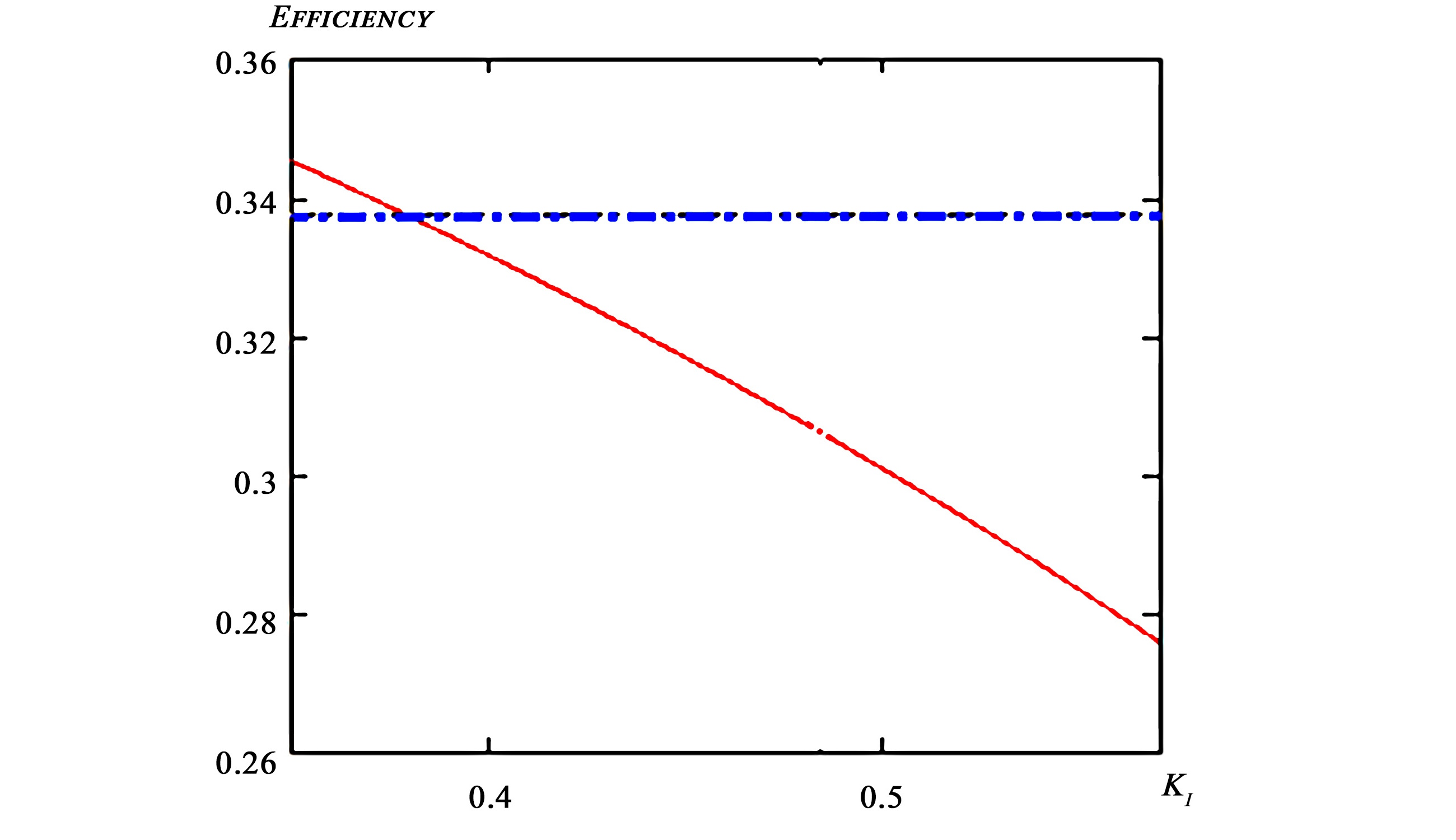Determination of energy efficiency of autonomous generating equipment of industrial parks in conditions of military aggression
DOI:
https://doi.org/10.15587/2706-5448.2023.289928Keywords:
industrial parks, energy efficiency, electric generator, internal combustion engine, energy indicators, diagnostic parameterAbstract
The work considers the problem of determining the factors of energy efficiency of industrial parks in the conditions of military aggression in the conditions of the introduction of the National Economic Strategy and regulatory influence on Industrial Parks in Ukraine. The energy efficiency of industrial parks primarily depends on the main parameters of the selected technological processes that are embedded in the basis of enterprises and their productivity. A significant factor affecting the environmental friendliness and energy efficiency of industrial parks is the method of energy generation. On the basis of the analysis of the work of enterprises operating in conditions of military aggression, the main factors determining the energy efficiency of electricity production have been determined. Such factors are the overall efficiency of the power generating unit, which is determined by monitoring and diagnosing the power unit. Analyzing changes in energy efficiency, the characteristics of the power part of one of the most powerful diesel engines were selected. It is obvious that the diesel locomotive will consume more fuel to generate energy with a decrease in efficiency. The main diagnostic factors of generating equipment that affect the energy efficiency of industrial parks in conditions of military aggression are: the ratio of currents in compressor and depressurized modes, the real degree of compression, and as a result, the efficiency of the power plant. On the basis of the determined factors, the effectiveness of the implementation of the system of monitoring and diagnosing the power units of energy-generating equipment of enterprises in the conditions of military aggression was determined. Recommendations have been established to minimize fuel consumption and reduce emissions to ensure the main principles of industrial parks, environmental friendliness and energy efficiency.
References
- Shevchuk, N. A., Tulchynska, S. O., Pohrebniak, A. Yu. (2021). Directions of changes in regulatory acts on the development of industrial parks in Ukraine. Ekonomichnyi visnyk Natsionalnoho tekhnichnoho universytetu Ukrainy «Kyivskyi politekhnichnyi instytut», 20. doi: https://doi.org/10.20535/2307-5651.20.2021.252588
- Natsionalna ekonomichna stratehiia 2030. Kabinet Ministriv Ukrainy. Available at:https://nes2030.org.ua Last accessed: 12.12.2022
- Pro Industrialni parky (2012). Zakon Ukrainy No. 5018-VI. 21.06.2012. Available at:https://zakon.rada.gov.ua/laws/show/5018-17#Text Last accessed: 12.12.2022
- Tulchynska, S., Shevchuk, N., Popelo, O., Pohrebniak, A., Kravchyk, Y. (2021). Operation of industrial parks in the conditions of sustainable development and the paradigm of circular economy. Laplage Em Revista, 7(3C), 238–247. doi: https://doi.org/10.24115/s2446-6220202173c1602p.238-247
- SkilkyheneratorivzavezlydoUkrainy u 2022 rotsi (2022). Slovo i Dilo.Available at:https://www.slovoidilo.ua/2022/12/22/infografika/ekonomika/skilky-heneratoriv-zavezly-ukrayiny-2022-roczi Last accessed: 20.10.2023
- Bellantuono, N., Carbonara, N., Pontrandolfo, P. (2017). The organization of eco-industrial parks and their sustainable practices. Journal of Cleaner Production, 161, 362–375. doi: https://doi.org/10.1016/j.jclepro.2017.05.082
- Yehorov, I. Yu., Boiko, O. M., Hryha, V. Yu. (2015). Industrialni parky v Ukraini: problemy stanovlennia ta perspektyvy rozvytku. Kyiv, 139.
- Solihah, N., Nashiruddin, M. I., Sugesti, E. S. (2021). Regulatory Impact Analysis for XGS-PON Standardization Development in Indonesia. 2021 13th International Congress on Ultra Modern Telecommunications and Control Systems and Workshops (ICUMT), 246–252. doi: https://doi.org/10.1109/icumt54235.2021.9631660
- International recommendations for Industrial Parks (2019). UNIDO. Vienna.Available at:https://www.unido.org/sites/default/files/files/2019-11/International_Guidelines_for_Industrial_Parks.pdf Last accessed: 02.01.2023
- Zaichenko, S., Shevchuk, S., Opryshko, V., Pryadko, S., Halem, A., Adjebi, A. (2020). Determination of autonomous electrical energy source technical condition based on an internal combustion engine. 2020 IEEE KhPI Week on Advanced Technology (KhPIWeek), 305–308. doi: https://doi.org/10.1109/khpiweek51551.2020.9250074
- Denysiuk, S., Zaichenko, S., Opryshko, V., Derevianko, D. (2021). Assessment of consumers power consumption optimization based on demand side management. EUREKA: Physics and Engineering, 2, 19–31. doi: https://doi.org/10.21303/2461-4262.2021.001689
- Shakhmeister, L. G., Dmitriev, V. G. (1987). Teoriia i raschet lentochnykh konveierov. Moscow: Mashinostroenie, 336.
- Zaichenko, S., Denysiuk, S., Pobihailo, V., Dubovyk, V., Derevianko, D., Jukova, N. (2022). Comparison of energy efficiency of a synchronous electric generator with a spark ignition engine using gasoline and gasoline blended with ethanol. 2022 IEEE 3rd KhPI Week on Advanced Technology (KhPIWeek).doi: https://doi.org/10.1109/khpiweek57572.2022.9916431
- Cai, B., Sun, X., Wang, J., Yang, C., Wang, Z., Kong, X. et al. (2020). Fault detection and diagnostic method of diesel engine by combining rule-based algorithm and BNs/BPNNs. Journal of Manufacturing Systems, 57, 148–157. doi: https://doi.org/10.1016/j.jmsy.2020.09.001
- Zaichenko, S., Erçetin, Ü., Kulish, R., Derevyanko, D., Shalenko, V. (2021). Determination of Diagnostic Parameters of Power Plants Based on Internal Combustion Engines. Mining Revue, 27(3), 86–92. doi: https://doi.org/10.2478/minrv-2021-0028

Downloads
Published
How to Cite
Issue
Section
License
Copyright (c) 2023 Stefan Zaichenko, Denys Derevianko, Roman Kulish

This work is licensed under a Creative Commons Attribution 4.0 International License.
The consolidation and conditions for the transfer of copyright (identification of authorship) is carried out in the License Agreement. In particular, the authors reserve the right to the authorship of their manuscript and transfer the first publication of this work to the journal under the terms of the Creative Commons CC BY license. At the same time, they have the right to conclude on their own additional agreements concerning the non-exclusive distribution of the work in the form in which it was published by this journal, but provided that the link to the first publication of the article in this journal is preserved.







